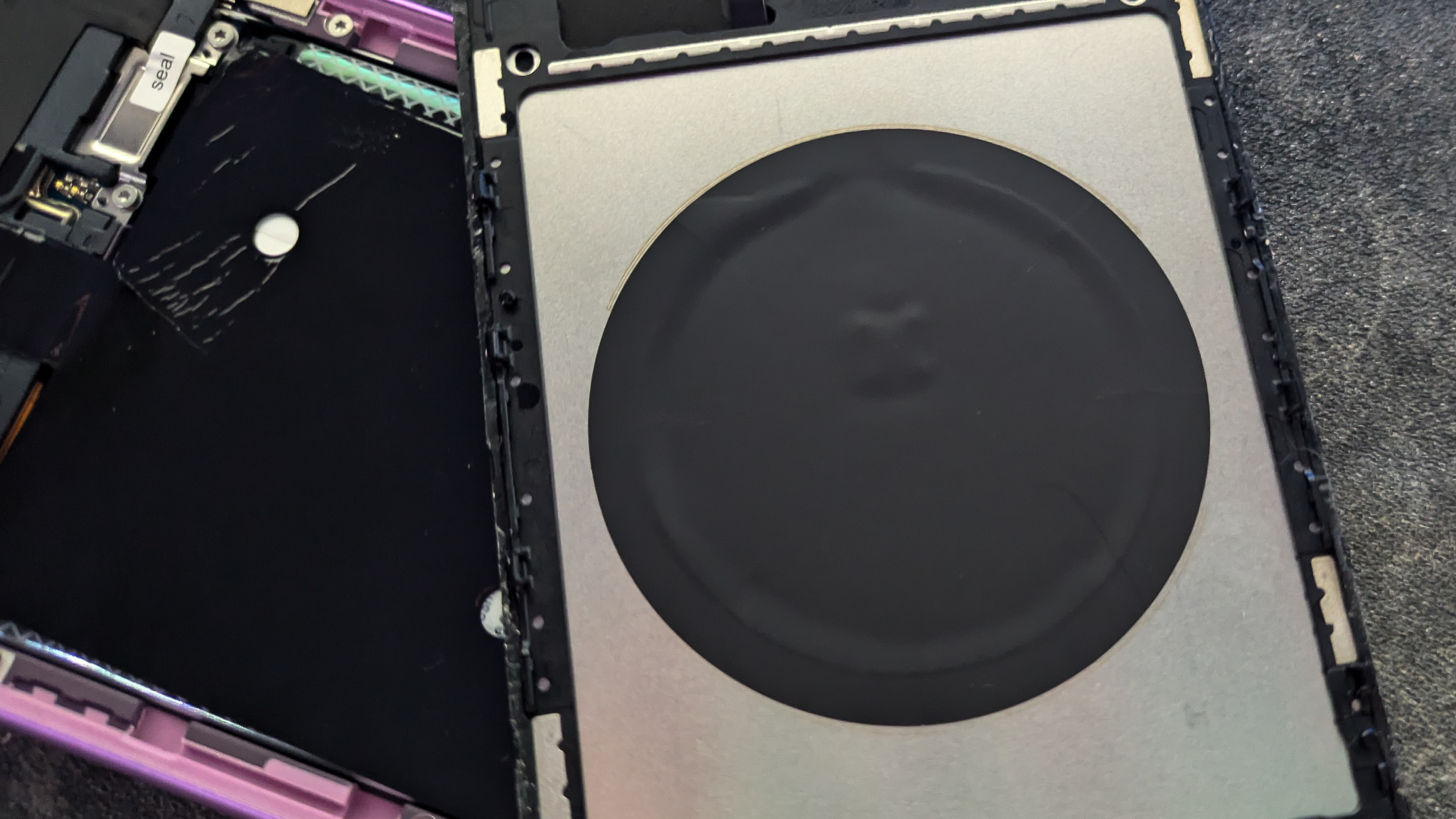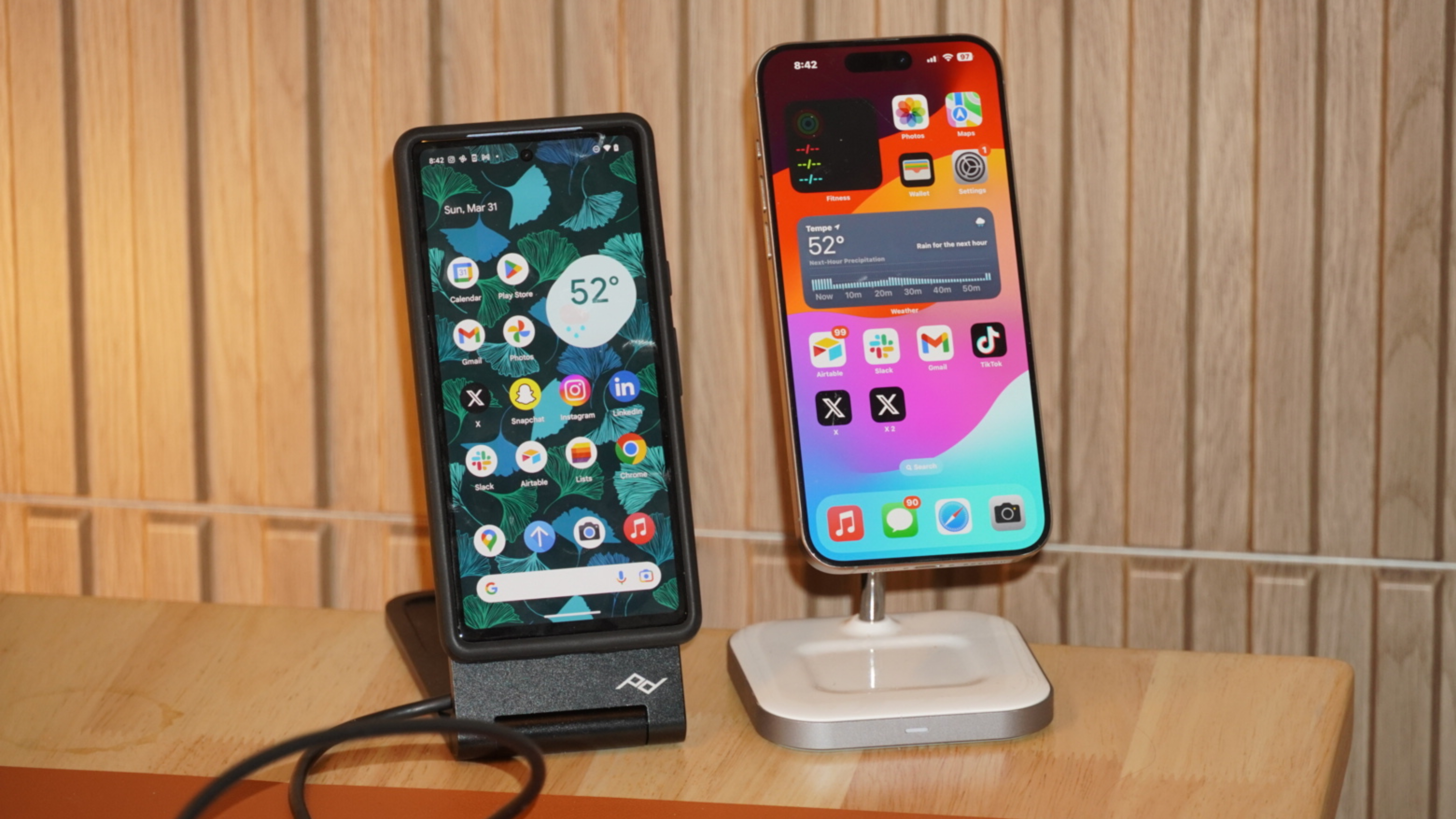Magnets required: Wireless Power Consortium sets the record straight on Qi2
It turns out that all devices and accessories branded as Qi2 must feature the Magnetic Power Profile.

Update (Aug. 28, 4 a.m. ET): We received a statement from the marketing director of the Wireless Power Consortium (WPC) that provides clarification on the specifications and trademarks associated with the Qi2 brand. Every device branded as supporting Qi2 or with a Qi2 logo must include magnets, as Qi2 is the trademark for the Qi v2.0 Magnetic Power Profile (MPP) specification.
It was originally reported that not all Qi2 devices were required to have magnets; however, that was based on an incorrect interpretation of the Qi2 specification. While the Qi v2.0 specification does allow for Extended Power Profile (EPP) devices without magnets to comply, these devices and accessories "cannot call itself Qi2 or use the Qi2 logo," per the WPC. "Any packaging or marketing materials for such a device would have required language informing the consumer that this device does not include magnets."
You can read the original article in its unedited form below.
What you need to know
- The main appeal of the Wireless Power Consortium's new Qi2 charging standard is the Magnetic Power Profile (MPP).
- The MPP allows Qi2-equipped devices to connect with magnetic accessories, including those that support MagSafe, such as chargers, wallets, cases, and more.
- However, it has been revealed that devices do not have to support the MPP to earn Qi2 certification, creating a confusing situation.
It's rare that Apple basically gift wraps a proprietary technology to give to the entire industry like the company did when it gave MagSafe to the Wireless Power Consortium (WPC) for inclusion in the Qi2 specification. I wonder what it thinks of that decision now that the WPC, Android device manufacturers, and accessory makers have seemingly botched what should've been a monumental launch for Qi2.
We know that basically all devices that charge wirelessly use the Qi charging standard, excluding a few categories, like smartwatches. Qi2 is the next-generation wireless charging spec from the WPC, and it packs some exciting upgrades. The standard bumps the maximum wireless charging speed up from 7.5W to 15W and, more importantly, includes the Magnetic Power Profile (MPP).
Or so we thought.
The MPP can be viewed as an open-sourced version of Apple's proprietary magnetic connection system. That means that devices that support Qi2 and the MPP, by extension, could connect to MagSafe chargers and other accessories. Qi2 and the MPP have been talked about interchangeably in the lead-up to the standard's release. Since the WPC charges a lump sum to view the specification in its entirety — a fee to the tune of $18,000 — we all assumed that Qi2 always shipped with the MPP, but that isn't the case.
Be an expert in 5 minutes
Get the latest news from Android Central, your trusted companion in the world of Android
Android expert Mishaal Rahman points out that Qi2 and MPP are indeed separate in a post on X (formerly Twitter). Previously, it was thought that a device or accessory needed to support the MPP to earn the Qi2 specification. However, Rahman's discovery confirms that devices and accessories may feature Qi2 branding due to their support of 15W wireless charging while lacking magnets.
The most important thing you thought you knew about Qi2 is wrong: Qi2 charging doesn't mean magnetic charging!Today I learned that there are products that support Qi2 wireless charging but which DON'T have magnets. You likely thought magnetic charging was a requirement of Qi2,… pic.twitter.com/hWNgo7GbsOAugust 19, 2024
Rahman links to a press release from the WPC that plainly states the way that Qi, Qi2 MPP, and Qi2 extended power profile (EPP) will be used going forward. Qi is the EPP standard we're used to, with up to 7.5W wireless charging speeds. Devices and accessories that use the Qi2 spec with the MPP included can utilize the fancy new Qi2 logo to signify its magnetic capabilities. According to the WPC, devices and accessories that meet the Qi2 requirements over the EPP will be "branded with the existing Qi logo consumers know and use today."
If this is how the WPC is handling the Qi2 rollout and certification process — the linked press release is from November 2023, and there is some uncertainty around whether things have changed since then — there are pros and cons to its approach. It's great to know that if you see that Qi2 logo with the ring around it, you can be sure that your device supports both Qi2 charging speeds and has magnets. However, the original Qi spec has become convoluted in the process since it could support either 7.5W or 15W charging speeds — and there's no way to know which by the logo.
Android Central reached out to the Wireless Power Consortium for clarification on the Qi2 certification requirements and the logos currently in use. We did not hear back in time for publication, but we'll update this article when we do.
I really hope companies don't ruin Qi2 by neglecting the Magnetic Power Profile

As someone who has been following MagSafe (and later Qi2) on Android for years, I'm utterly perplexed by this development. Why is the WPC letting manufacturers certify their devices for Qi2 without including magnets? It's utterly unnecessary. Yes, it's true that Qi2 is about more than just magnets, namely when you consider the 15W charging speed. However, the 7.5W limitation hasn't stopped companies from offering faster charging speeds in the past through their own means — just look at what OnePlus has done with fast charging on its phones.
If the reason for the WPC permitting Qi2 devices that use the EPP was because it couldn't let Qi-branded devices offer more than 7.5W, that doesn't really make sense either. Qi2 products without magnets are still forced to use the old Qi logo anyway, so what's the point? This didn't have to be confusing, and now it is.
Right now, the vast majority of Qi2-enabled products include the MPP and are thus MagSafe-compatible. If companies do the right thing and add magnets to Qi2 chargers and accessories, the fact that the spec doesn't explicitly require them will become a tiny asterisk in the history of what should be a great standard. However, we have little reason to think that companies will do the right thing. For some reason, we've yet to see a flagship Android phone shipped with Qi2 support — the HMD Skyline is the only one to do so.
To put it simply, the rollout of Qi2 has been a mess so far. Google and Samsung both had numerous chances to add the standard to their smartphones, and they passed. We might've given Samsung a pass when it launched the Galaxy S24 series in early 2024 and the Galaxy Z series this summer. But what's Google's excuse for not including it in the Google Pixel 9 lineup?
I don't know why more phones don't already feature Qi2, and I don't know why magnets aren't required. The whole point of Qi2 was to get the MagSafe experience on Android and other platforms, but no one really seems interested in making that a reality, at least not in 2024.

Brady is a tech journalist for Android Central, with a focus on news, phones, tablets, audio, wearables, and software. He has spent the last three years reporting and commenting on all things related to consumer technology for various publications. Brady graduated from St. John's University with a bachelor's degree in journalism. His work has been published in XDA, Android Police, Tech Advisor, iMore, Screen Rant, and Android Headlines. When he isn't experimenting with the latest tech, you can find Brady running or watching Big East basketball.
You must confirm your public display name before commenting
Please logout and then login again, you will then be prompted to enter your display name.
